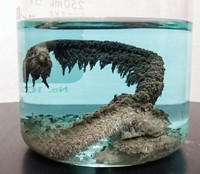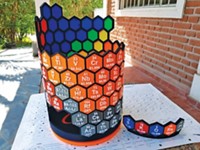Advertisement
Grab your lab coat. Let's get started
Welcome!
Welcome!
Create an account below to get 6 C&EN articles per month, receive newsletters and more - all free.
It seems this is your first time logging in online. Please enter the following information to continue.
As an ACS member you automatically get access to this site. All we need is few more details to create your reading experience.
Not you? Sign in with a different account.
Not you? Sign in with a different account.
ERROR 1
ERROR 1
ERROR 2
ERROR 2
ERROR 2
ERROR 2
ERROR 2
Password and Confirm password must match.
If you have an ACS member number, please enter it here so we can link this account to your membership. (optional)
ERROR 2
ACS values your privacy. By submitting your information, you are gaining access to C&EN and subscribing to our weekly newsletter. We use the information you provide to make your reading experience better, and we will never sell your data to third party members.
Environment
Inorganic 'Jeopardy!'
Quizzes based on the popular television game show enliven an undergraduate chemistry course
by Sophie L. Rovner
September 24, 2007
| A version of this story appeared in
Volume 85, Issue 39
What element can melt in your hand? What products are formed by the reaction between a solution of lithium hydride and aluminum chloride? And what is the Hall process? If you can answer those questions, you might do pretty well in John C. (Josh) Van Houten's undergraduate inorganic chemistry course at Saint Michael's College in Colchester, Vt.
The chemistry professor has collected a series of such questions to create quizzes based on the format used in the television game show "Jeopardy!" Van Houten described the technique during last month's American Chemical Society national meeting in Boston. His presentation was part of a Division of Chemical Education symposium on revitalizing undergraduate descriptive inorganic chemistry courses.
Each Tuesday morning during the first 10 or 15 minutes of class, Van Houten quizzes his students on the content of that week's course book chapter. He projects the quiz on a screen at the front of the classroom. The quiz is arranged in a grid format, with topic categories listed across the top of the page and a column of ascending dollar values listed under each topic. Categories for the questions include properties, common reactions, definitions and nomenclature, and sources and uses of materials.
Each of his five or so students takes a turn by selecting a category and a degree of difficulty, which is indicated by a value between $200 and $800. A correct answer to the melting element question is worth $400, for example, while the answer to the one about the Hall process is worth $800. Van Houten often breaks higher value questions into multiple parts so students can earn partial credit.
After a student selects a category and dollar value, Van Houten reveals the associated question. Each student writes down an answer—though unlike on the television show, it doesn't have to be in the form of a question—and the correct answer is then revealed. "If the person who chose the question gets the correct answer, that student gets full credit, and everyone else in the class who gets the correct answer gets half credit," Van Houten said. "If the person who chose the question gets it incorrect, then everyone else in the class who gets it correct gets full credit." At the end of the game, the dollar totals are converted into points that contribute to the students' grades.
The game-show format "has a number of advantages over a written quiz," Van Houten said. "First of all, it's a little bit more fun. It also provides you the opportunity to give instant feedback and instant embellishment."
On the downside, "there is a little bit of loss of privacy," he acknowledged. "Everybody knows how everybody else is doing. Some students don't like that."
In case you're wondering, gallium is the element that can melt in your hand. The lithium hydride reaction forms lithium aluminum hydride and lithium chloride. And the Hall process produces aluminum through the electrolysis of alumina in molten Na3AlF6.





Join the conversation
Contact the reporter
Submit a Letter to the Editor for publication
Engage with us on Twitter